50+ SAMPLE Agency Request for Proposal
-
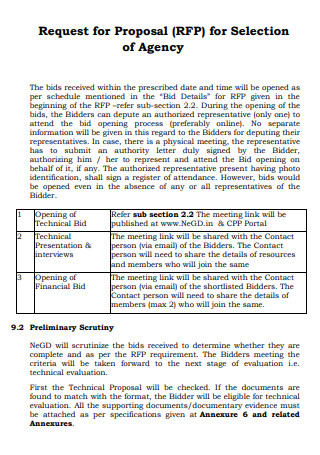
Selection of Agency Request for Proposal
download now -
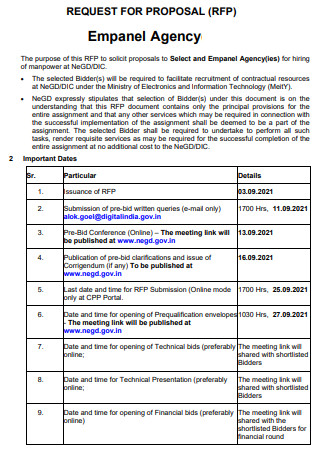
Empanel Agency Request for Proposal
download now -
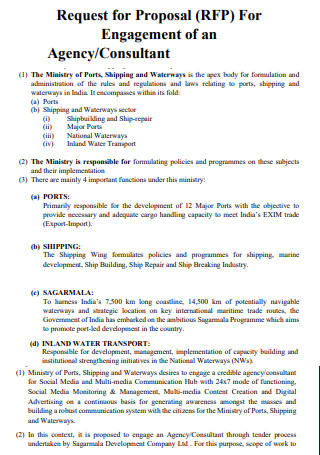
Engagement of an Agency Request for Proposal
download now -
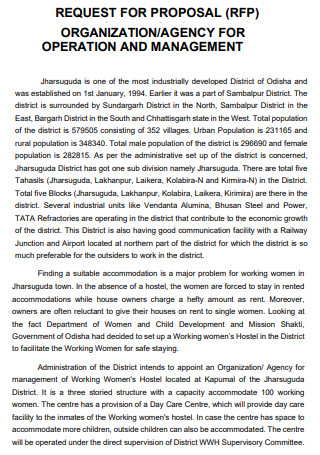
Agency for Operation Request for Proposal
download now -
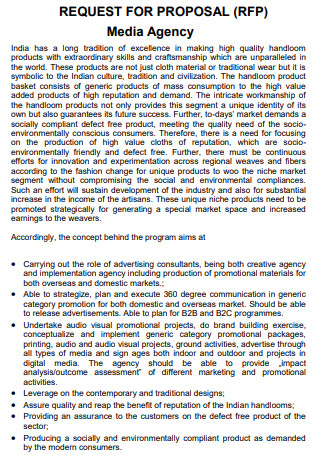
Media Agency Request for Proposal
download now -
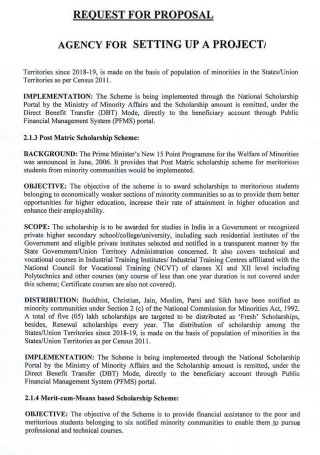
Agency for Project Request for Proposal
download now -
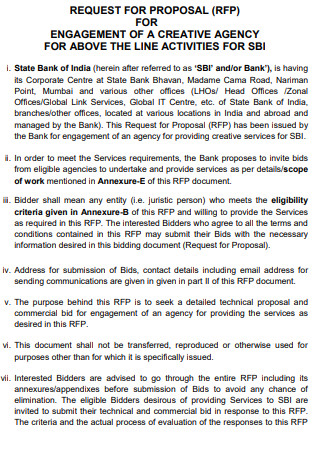
Creative Agency Request for Proposal
download now -

Project Support Agency Request for Proposal
download now -
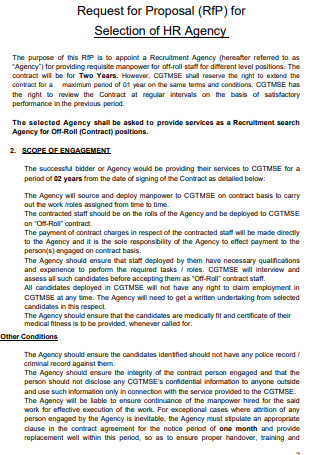
Selection of HR Agency Request for Proposal
download now -
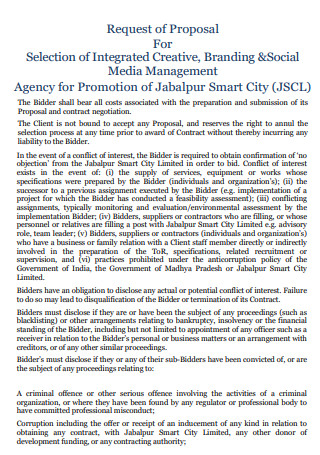
Agency for Promotion Request for Proposal
download now -
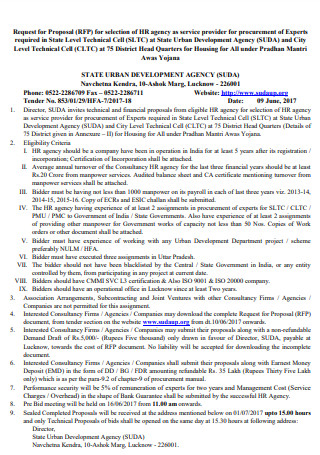
Agency as Service Provider Request for Proposal
download now -
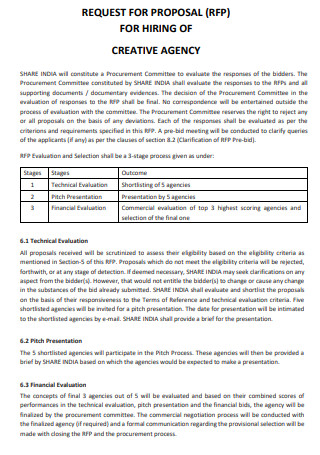
Hiring for Creative Agency Request for Proposal
download now -
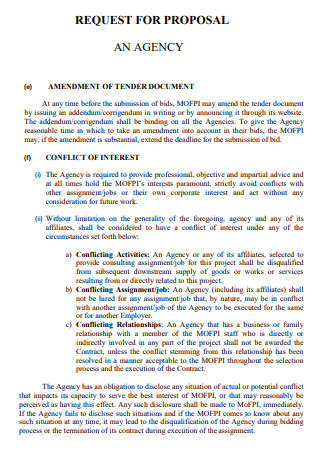
An Agency Request for Proposal
download now -
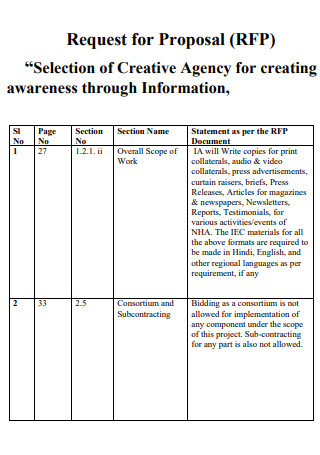
Agency for Creating Awareness Request for Proposal
download now -
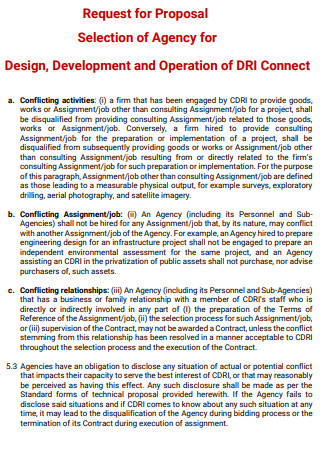
Agency for Design Request for Proposal
download now -
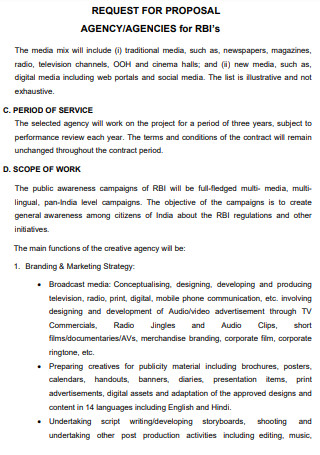
Agency for RBI Request for Proposal
download now -
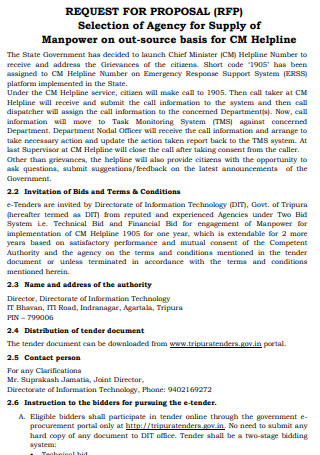
Agency for Supply of Manpower Request for Proposal
download now -
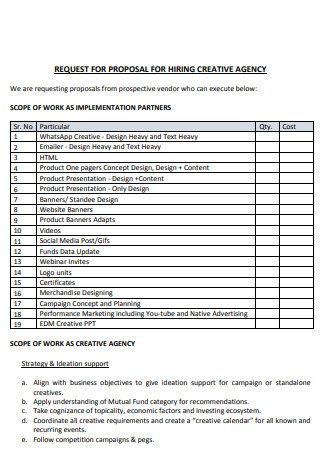
Request for Proposal for Hiring Creative Agency
download now -
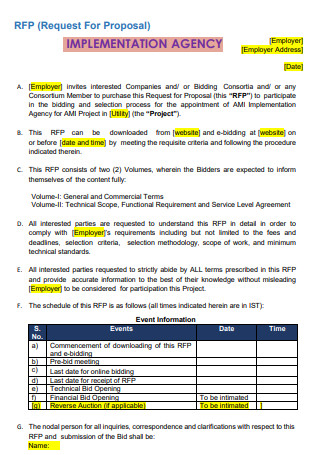
Implementation Agency Request for Proposal
download now -
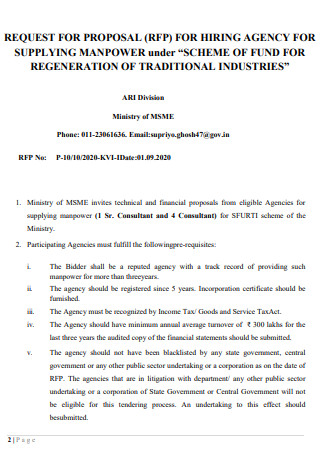
Sample Agency Request for Proposal
download now -
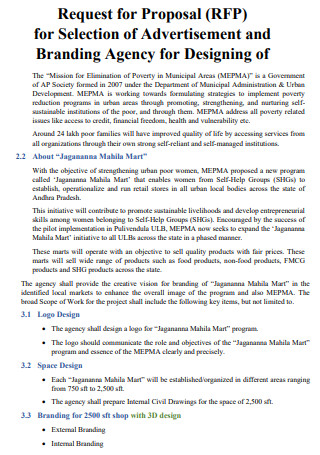
Branding Agency Request for Proposal
download now -
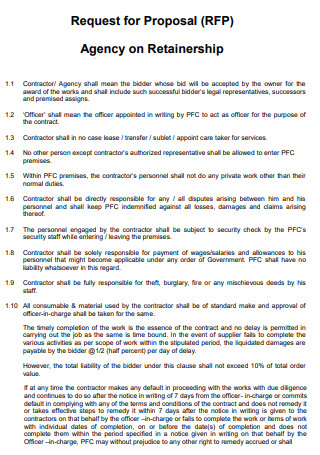
Agency on Retainership Request for Proposal
download now -
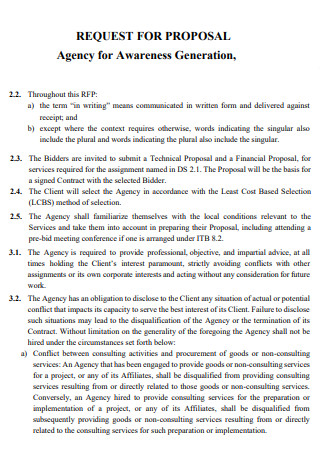
Agency for Awareness Generation Request for Proposal
download now -
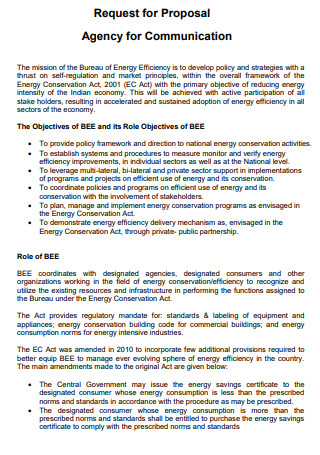
Agency for Communication Request for Proposal
download now -
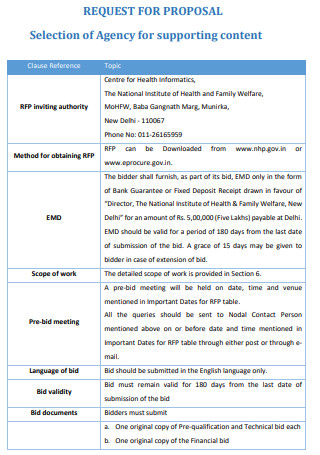
Agency for Supporting Content Request for Proposal
download now -
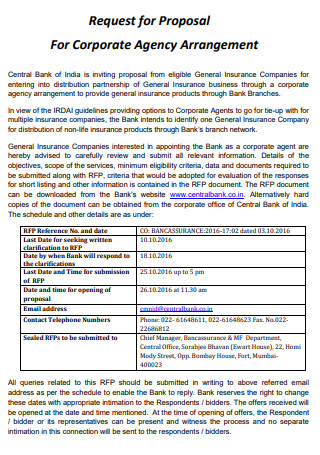
Corporate Agency Request for Proposal
download now -
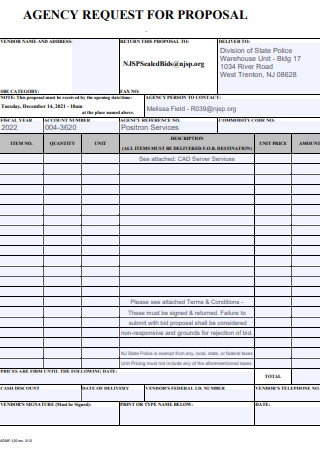
Agency Request for Proposal
download now -
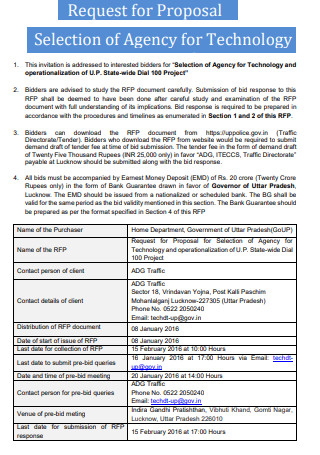
Agency for Technology Request for Proposal
download now -
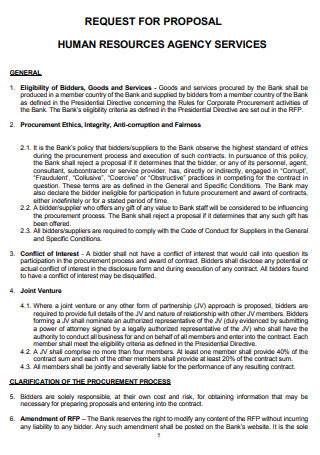
HR Agency Service Request for Proposal
download now -
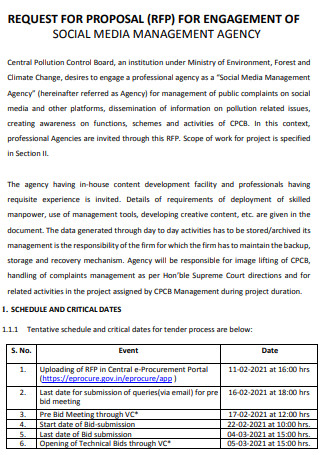
Social Media Management Agency Request for Proposal
download now -
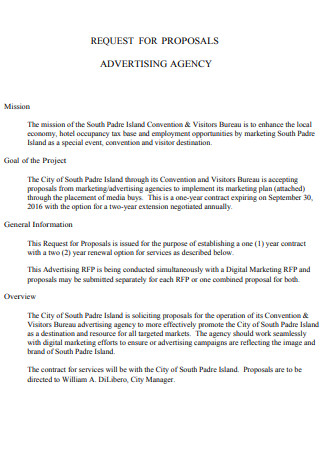
Advertising Agency Request for Proposal
download now -
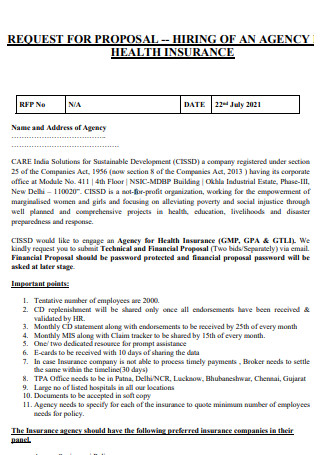
Agency for Health Insurance Request for Proposal
download now -
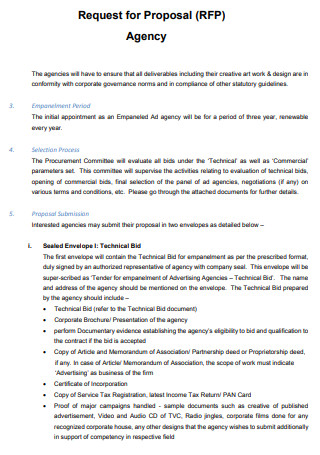
Basic Agency Request for Proposal
download now -
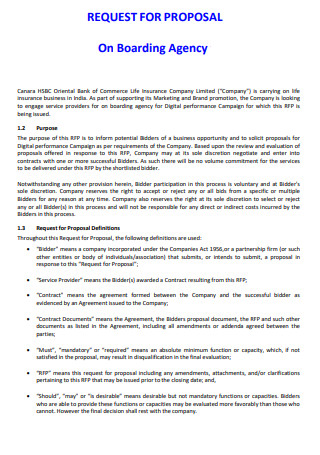
Boarding Agency Request for Proposal
download now -
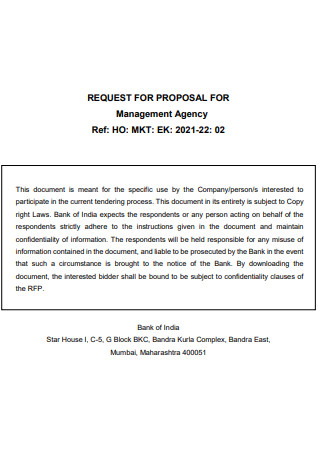
Management Agency Request for Proposal
download now -
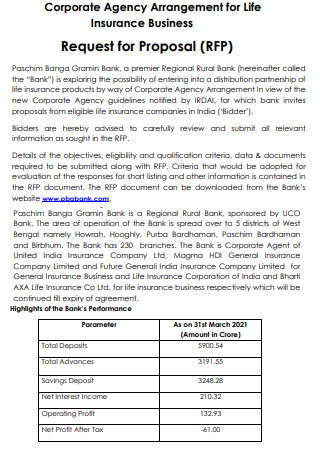
Agency for Insurance Business Request for Proposal
download now -
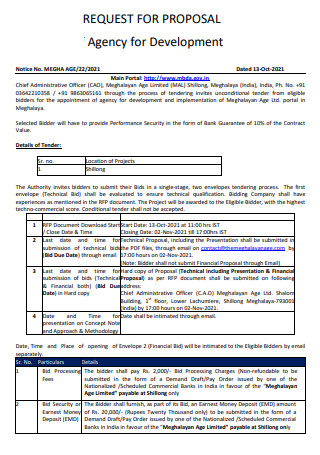
Agency for Development Request for Proposal
download now -
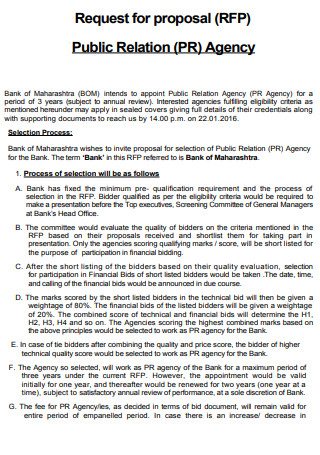
Public Relations Agency Request for Proposal
download now -
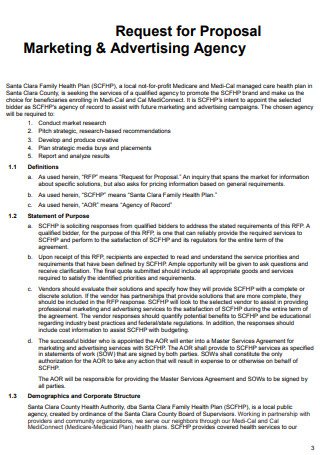
Marketing & Advertising Agency Request for Proposal
download now -
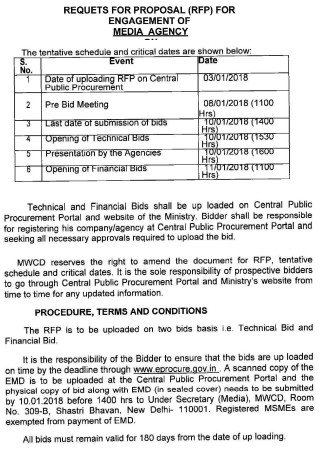
Engagement Media Agency Request for Proposal
download now -
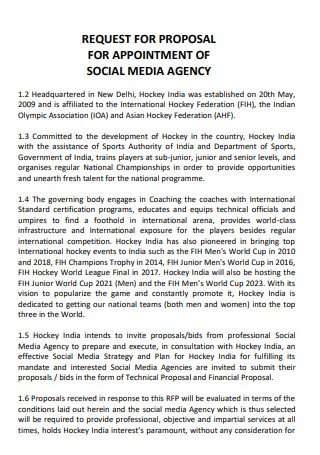
Social Media Agency Request for Proposal
download now -
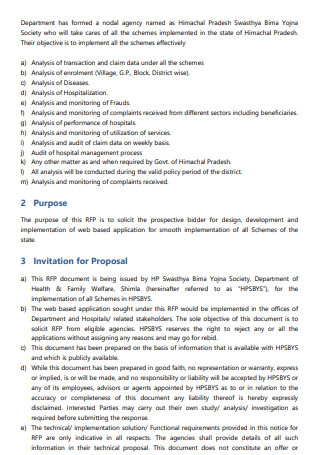
Agency for Web Portal Request for Proposal
download now -
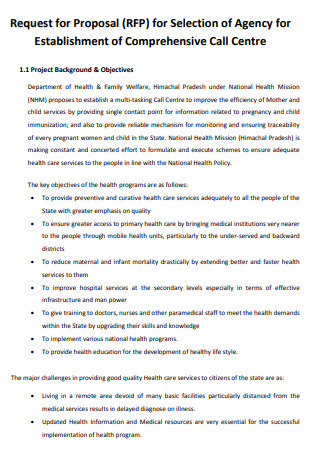
Agency for Establishment Request for Proposal
download now -
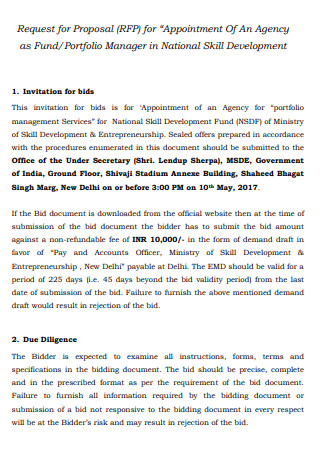
Agency Portfolio Request for Proposal
download now -
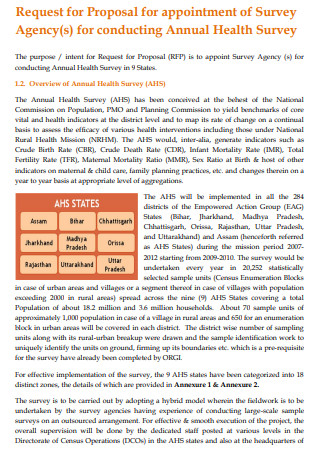
Survey Agency Request for Proposal
download now -
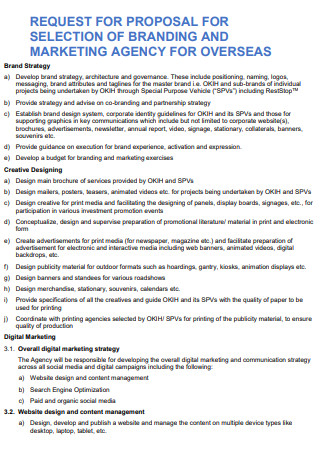
Branding and Marketing Agency Request for Proposal
download now -
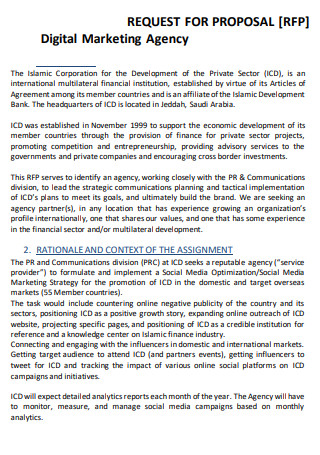
Digital Marketing Agency Request for Proposal
download now -
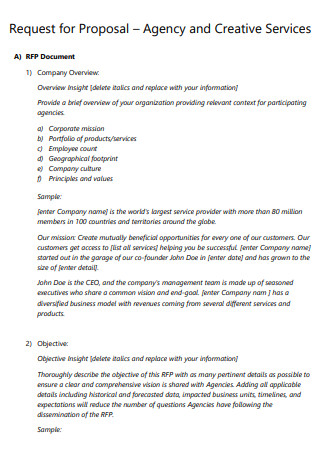
Agency & Creative Services Request for Proposal
download now -
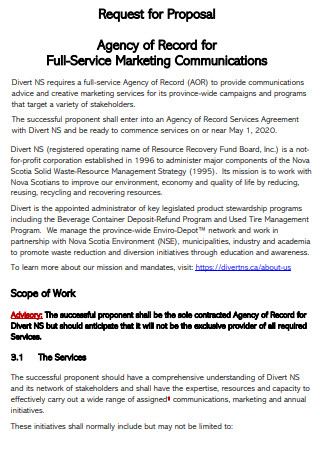
Agency of Full-Service Marketing Request for Proposal
download now -

Integrated Communication Agency Request for Proposal
download now -

Digital Media Agency Request for Proposal
download now
FREE Agency Request for Proposal s to Download
50+ SAMPLE Agency Request for Proposal
What Is an Agency Request for Proposal?
Tips for Writing an Agency Request for Proposal
The Don’ts of the RFP Process
How to Write an Agency Request for Proposal
FAQs
What is the difference between RFQ and RFP?
When should you issue an RFP?
What happens after RFP?
What Is an Agency Request for Proposal?
RFP stands for request for proposal, and it’s a frequent document that helps a company limit its partner search. RFPs in the context of an advertising agency is used to introduce your company to potential partners and provide a background on your previous advertising successes and failures, articulate the specific business challenges you would like a partner to help solve, and outline the information you need from the agency so you can properly evaluate their expertise, approach, and potential fit to help your company’s public relations. Before you proceed to the guide below, stop by to view the request for a proposal sample for reference.
Tips for Writing an Agency Request for Proposal
Consider your project to be an issue that has to be solved. You are looking for an agency partner who can provide you with a unique solution that suits your company’s needs. This method gives the RFP a different perspective. The answering agency can construct a project roadmap to measure, solve, and price when you start by articulating the problem rather than presenting a list of goods and services. There is a significant distinction between them. Instead of a wish list, a competent RFP should provide a crystal clear statement of what you need; if you feel compelled to include your wants, do it in a separate section.
The Don’ts of the RFP Process
Just like an RFP guideline, there are things you should also keep in mind that you will need to avoid. Although this isn’t likely to be avoided, you will need to be wary if there is a possibility that it would occur. If it does, then you are prepared to address it. Whether or not you will avoid it or work around it, it is better to be prepared against it.
How to Write an Agency Request for Proposal
This is the section of the article where you will go through the request for proposal process so that you can have a completed brand agency RFP and then submit it to the chosen agency. The above article will help you to be more knowledgeable in terms of what there is to writing an RFP. Remember, there is no specific format to an RFP but there are basic elements that should be included. Give time to review the marketing agency RFP example to see how the layout is made.
Step 1: Introduction and Background
Include essential background information about your company, such as who started it, what product or service it offers, what sets you distinct from competitors, and where you are based, in your introduction paragraph. Before proceeding, any interested party who is serious about doing business with you will need these details. You could also specify the specialization your company offers which the other agency can benefit from, in the same way, that if the agency has an equivalent contribution, then it should be made known so that both parties can utilize the partnership in the best possible way.
Step 2: Project Goals and Scope of Services
Following that, you will want to define the project you need to finish and the objectives you hope to achieve as a result of it. When describing precise roles and requirements, it’s vital to be as specific as possible. The goals, objectives, deliverables, work plan, costs, and deadlines of a project are all included in well-written project scope. It also gives duties and responsibilities. It is best to define the scope of work you will be capable of executing so that neither party will be forced to do a task they can’t accomplish.
Step 3: Anticipated Selection Schedule
You must provide a precise project timeline so that agents can assess their ability to meet your deadlines. You will also need to set out time for agents to ask inquiries about your project. You should also provide the time and location of the proposal’s submission. This is critical information that you should make explicit so that agents understand how and where to submit themselves for consideration. It is important that the agency follows through on the set schedule, so you should see to it they follow that.
Step 4: Timeline
You can remove any agent who can’t operate within your time limits by putting a time frame in your RFP. You could include a clarification that your company or organization hopes to accomplish the project within six months or a specific timeframe, though are open to negotiation for the right candidate. If your project or case is not time-sensitive, you can write that you are flexible with your schedule.
Step 5: Elements of Proposal
You can’t necessarily blame bidders if they don’t include what you need them to include in their proposal if you don’t spell it out clearly and specifically. You must create a checklist so that agents know what you are looking for. It’s also a fantastic way to see if an agent is capable of meeting your needs; if they can’t fulfill all components of your proposal, you can’t trust them to complete your project.
Step 6: Evaluation Criteria
Outlining your expectations will aid in weeding out agents who fall short. You should do some brainstorming with your team for this section to come up with a mandatory list of items that you believe are the best indicators of exceptional prospects. Samples of previous work, a proven track record of success with firms in similar industries, the experience, and technical skills to fulfill your needs, and a cost of services within your budget could all be on your list.
FAQs
What is the difference between RFQ and RFP?
A request for a proposal is an RFP, whereas a request for a quote is an RFQ. The main distinction is the goal. You send an RFQ when you know precisely what product or service you require and only need the price. When you have a commodity-style procurement, such as goods rather than services, exact quantities and requirements are known, and the price will be the major criterion for selecting a winning agent, RFQs are most typically employed.
When should you issue an RFP?
Projects that require an outside agent to work alongside the client’s internal team, when the client’s internal team is missing necessary capabilities such as little to no understanding of an emerging marketing trend or no experience targeting a specific cultural group or industry, when the client’s internal team does not have the bandwidth to execute on a particular project, and projects that require technical expertise are just a few of the common circumstances that trigger the RFP process. Email marketing, website building, social media marketing, and overall digital strategy are all examples.
What happens after RFP?
The entire procedure usually takes between a month and a half and three months, although it might take much longer if contract talks are problematic or if a bidding agency challenges the result. An RFQ is frequently issued in response to an RFP, but it can also be issued on its own for highly standardized goods and services. The abbreviation RFX is frequently used to express a request for a specific purpose. It could be a suggestion, information, a quote, or something else.
Finding the ideal agency partner requires a well-written, thorough, and thoughtful RFP. RFPs for agencies can help you increase your odds of finding a good fit with the precise right agency for you, lower the risk of spending time and money on the wrong match, and create the groundwork for a long and productive relationship. The procurement of an agency request for a proposal is important because there are benefits that your company can gain throughout the partnership. Be sure to keep in mind what you have learned from this article so you can apply it as you write your agency request for a proposal.
